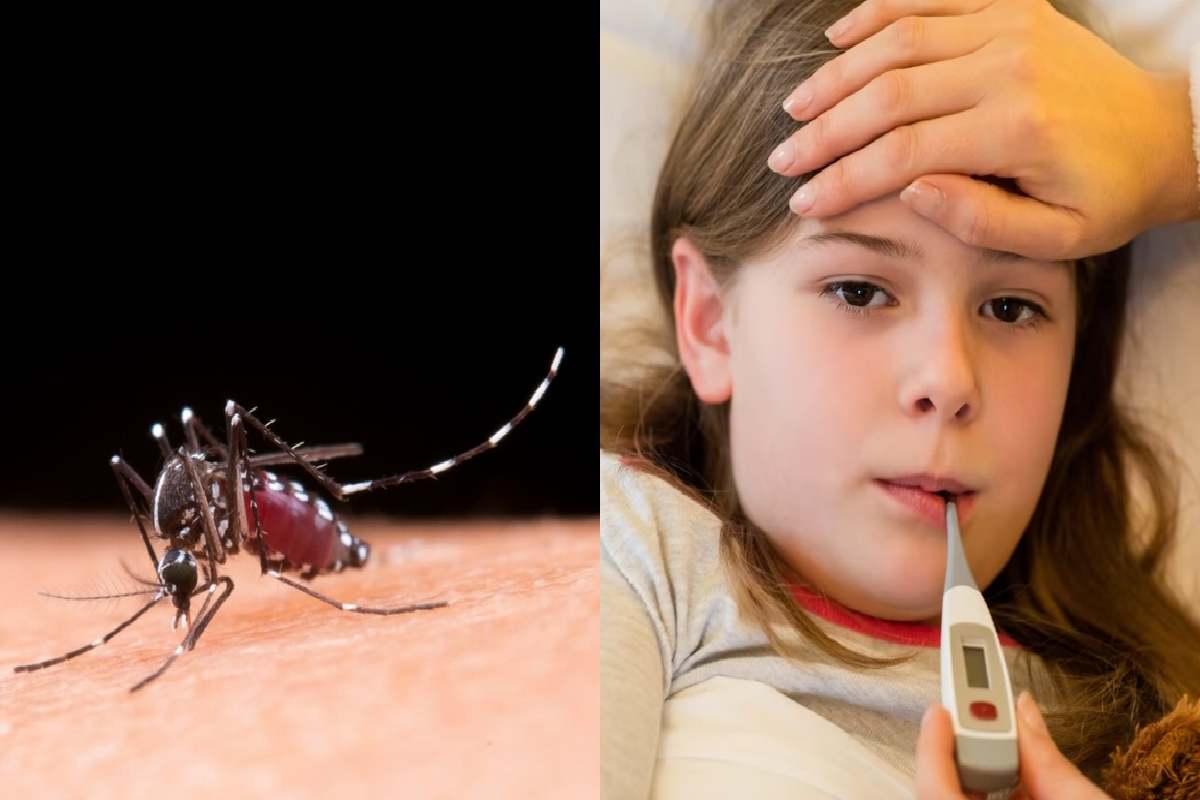Dengue fever, also called “tropical flu”, is a viral disease transmitted to humans by mosquitoes of Aedes. The incidence of dengue fever is progressing significantly, and today, it registers it among the ranks of so-called “re-emerging” diseases. The WHO estimates the number of cases annually at 50 million, including 500,000 cases of dengue hemorrhagic fever, which are fatal in more than 2.5% of cases. Two and a half billion persons live in zones at risk. Initially present in the tropical and subtropical areas of the world, dengue fever has now affected Europe, where the first two autochthonous cases were recorded in 2010. In 2019, the vector mosquito was implanted in 51 French departments. Therefore, the spread risk will be honest if infected people arrive in mainland France.
Table of Contents
Causes and Origins
Dengue fever caused by an arbovirus (a virus transmitted by arthropods), belonging to the Flaviviridae family, of the flavivirus genus, like the West Nile virus and yellow fever. It is transmitted to humans by mosquitoes of the genus Aedes. During a blood meal. Dengue virus strains fall into four distinct serotypes: DENV-1, DENV-2, DENV-3, and DENV-4. Immunity acquired in retort to infection by one serotype confers protective immunity against the infecting serotype but not against the other serotypes. As a result, an individual expected to remain infected with each of the four dengue serotypes during their lifetime. Subsequent infections with different serotypes increase the risk of developing severe dengue fever. An effective vaccine against dengue should therefore confer protective immunity against all serotypes.
Symptoms
- classic dengue fever
- Complications – dengue hemorrhagic fever
- Epidemiology
Dengue fever now considered a re-emerging disease. The globalization of the reduced and increased exchange of goods and people tends to reach new geographical areas, develops more and more in urban environments, and causes epidemics of greater importance. As a result, severe forms of dengue increasingly observed during recent outbreaks.
A Disease of Tropical Origin
Dengue mainly found throughout the intertropical zone. Long limited to Southeast Asia (440,000 cases in China in 1980, 200,000 cases in Thailand in 1987), it continues to spread to the Indian Ocean, the South Pacific (32,800 points in Tahiti, Moorea, and in French Polynesia, in 2001), in the French West Indies (2003 and 2006-2008 and 2009-2010), and in Latin America, where the annual reported cases increased by 60 between 1989 and 1993 compared to the previous period (1984-1988).
Since the end of 2009, the disease has raged in the epidemic mode in the West Indies. In 2010, dengue was the cause of 86,000 cases in Martinique and Guadeloupe (source Public Health France ). In 2011 and 2012, the epidemic did not break out.
The first cases of dengue hemorrhagic fever appeared in Cuba and the Caribbean in 1981, then again in 1996, in Cuba, after 15 years of interruption. In 2013, the epidemic declared in Guyana. That year, the Americas region alone reported 2.35 million cases, including 37,687 severe dengue cases. This worrying resurgence of dengue fever in Latin America. And the Caribbean seems to remain linked to the relative effectiveness of vector mosquito eradication programs in this region of the globe. Dengue fever has a significant economic impact on the countries where it occurs. Population growth, uncontrolled urbanization, natural disasters and the impoverishment of populations affected by the disease also seem to remain involved.
Towards colonization of temperate zones
In recent years, Aedes albopictus, a secondary vector of dengue fever in Asia, has established itself in North America and Europe, including France. Its period of motion in these regions is between May 1 and November 30, but it can survive thanks to its resistance to low temperatures and its ability to hibernate. Now, the risk of it transmission has become a reality. In 2010 in Nice, France, the first two autochthonous cases of dengue fever detected. In 2012, an outbreak in the Madeira archipelago (Portugal) caused more than 2000 cases. And imported cases detected in 10 other European countries, apart from mainland Portugal. France has repeatedly reported autochthonous cases of dengue fever since 2010: 1 (2013), 4 (2014), 8 (2015), 8 (2018), 9 (2019), and 12 (2020).


